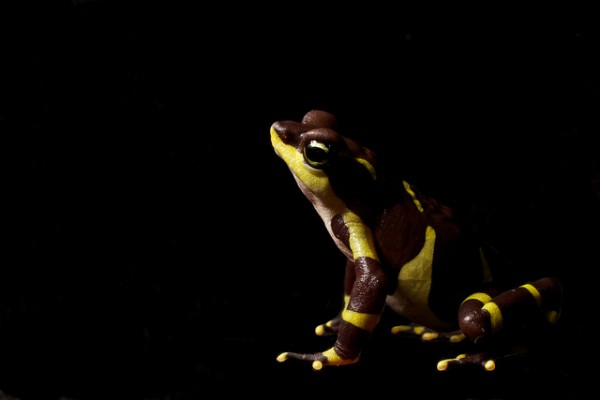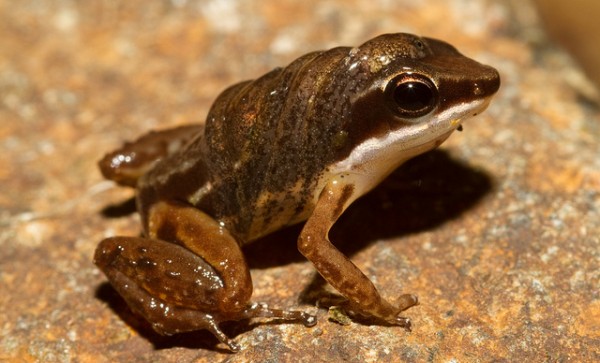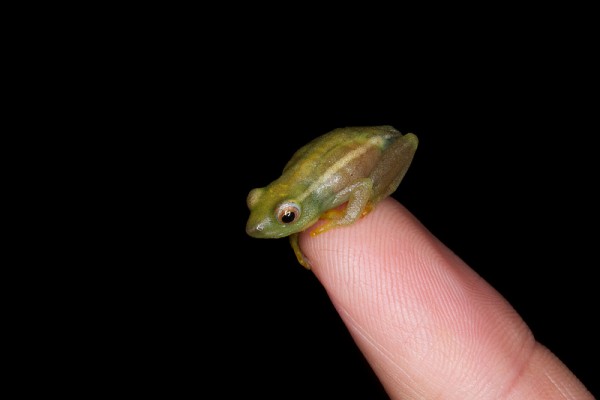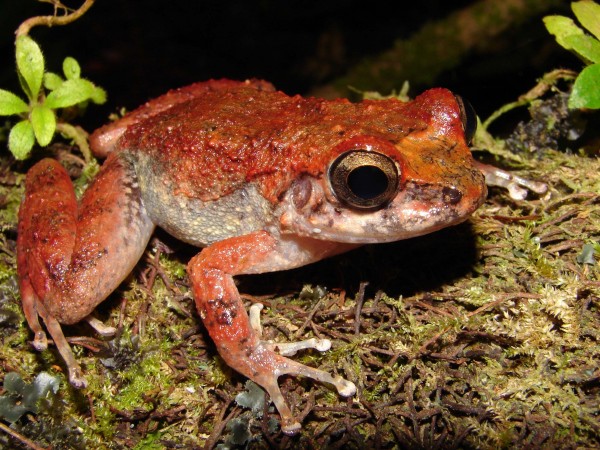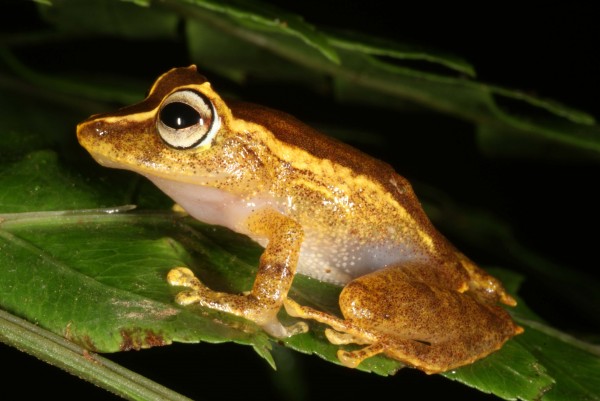Cute, crafty, and brightly patterned with yellow and black chevrons! The Limosa harlequin frog is a terrestrial species endemic to Central Panama that live in moist, tropical Atlantic forests. In the wild, you could once spot this species among the dark rocks or mossy patches on the banks of streams. It is here, in the fast-flowing rainforest streams that enthusiastic males call and use their characteristic hand-waving behavior to signal females or warn competing males to steer clear. If successful, a male attracts a female and embraces her in a behavior known as amplexus. They laytheir eggs in fast-flowing streams for good reasons. The shallow, swiftly flowing water protects the eggs and tadpoles from potential predators and once they emerge as tadpoles the tadpoles cling tightly to rocks using the suction disks on their bellies while they graze on diatoms and other algae that grow on stones in these clear, oxygen-rich environments.
This species is listed as Endangered on the IUCN Red List. Atelopus frog species’ have been hit hardest by the growing chytridomycosis epidemic. While deforestation of habitats for agricultural use and infrastructural development, stream sedimentation, and water pollution are also serious threats to Atelopus limosus, much of their range is in the Chagres National Park and scientists attribute the recent disappearances of this species to the emergence of amphibian chytrid fungus. Thankfully, the Panama Amphibian Rescue and Conservation Project has brought the endangered species into captivity and successfully hosts a very fruitful breeding population – no small feat at all!
Did you know? The limosa harlequin frog has two color forms; the brown form with a yellow nose and yellow fingertips mostly found at lowland sites, while the green/yellow form with black chevrons is normally found in the highlands. If you’d like to get a look at one of these amazing creatures, you can see them on exhibit at the Punta Culebra Nature Center’s Fabulous Frogs of Panama!
by Dara Wilson, Panama Amphibian Rescue and Conservation Project Volunteer

